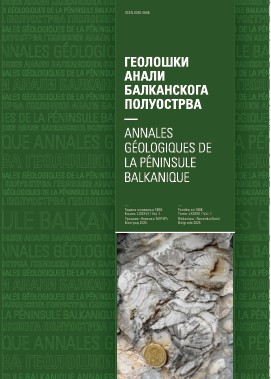Taxonomic significance of apical system in the Clypeaster echinoids
Taksonomski značaj apikalnog sistema kod roda Clzpeaster (Echinoidea)
Abstract
A study of morphologic features on a large number of Clypeaster species and specimens from Badenian sediments of Yugoslavia resulted in the conclusion that, among other morphologic characters, the structure of apical system is very important for identification of some species. This even more so, because T. Mortensen (1948) refutes the value of apical system for specific identification as it may vary in specimens of the same species. My experience with fossil Clypeasters is the opposite. Apical system varies among species, but is similar in specimens of the same species. It is monobasal and occurs in one of three principal forms: subpentagonal, pentagonal, or stellate. Each of the types may widely vary in the madreporite size, pentagon sides (straight or concave), shape, size and position of gonopores, etc. The sizes are compared of gonopore to madreporite plate and madreporite plate to test. On the basis of all these elements in fourteen species and two subspecies of the genus, sixteen different types of apical system were identified. The consideration is given to the reasons for and manner of the monobasal apical system development.
Copyright (c) 2025 Geološki anali Balkanskoga poluostrva

This work is licensed under a Creative Commons Attribution 4.0 International License.










